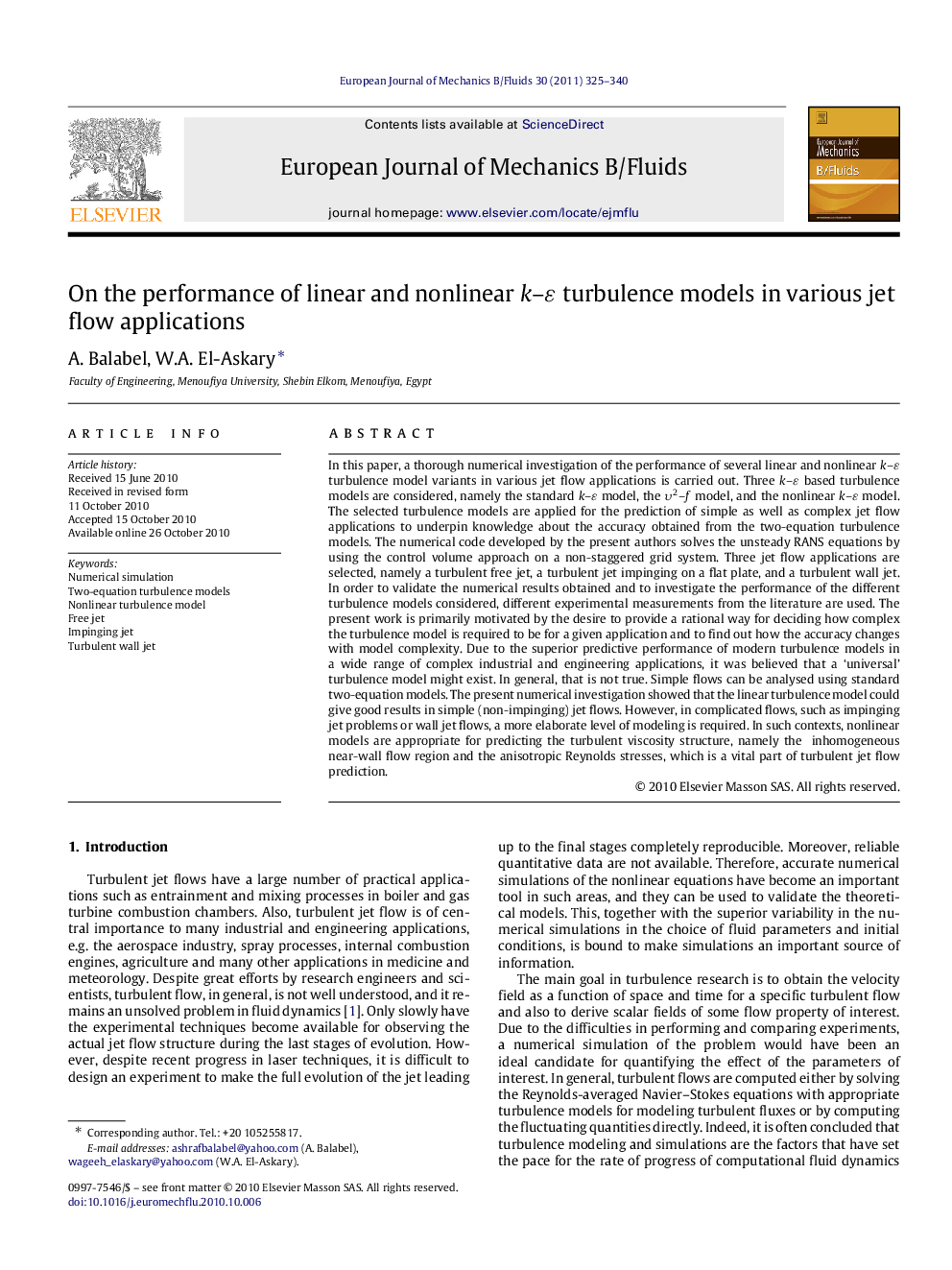| کد مقاله | کد نشریه | سال انتشار | مقاله انگلیسی | نسخه تمام متن |
|---|---|---|---|---|
| 650684 | 1457299 | 2011 | 16 صفحه PDF | دانلود رایگان |
عنوان انگلیسی مقاله ISI
On the performance of linear and nonlinear k-ε turbulence models in various jet flow applications
دانلود مقاله + سفارش ترجمه
دانلود مقاله ISI انگلیسی
رایگان برای ایرانیان
موضوعات مرتبط
مهندسی و علوم پایه
مهندسی شیمی
جریان سیال و فرایندهای انتقال
پیش نمایش صفحه اول مقاله

چکیده انگلیسی
In this paper, a thorough numerical investigation of the performance of several linear and nonlinear k-ε turbulence model variants in various jet flow applications is carried out. Three k-ε based turbulence models are considered, namely the standard k-ε model, the Ï
2-f model, and the nonlinear k-ε model. The selected turbulence models are applied for the prediction of simple as well as complex jet flow applications to underpin knowledge about the accuracy obtained from the two-equation turbulence models. The numerical code developed by the present authors solves the unsteady RANS equations by using the control volume approach on a non-staggered grid system. Three jet flow applications are selected, namely a turbulent free jet, a turbulent jet impinging on a flat plate, and a turbulent wall jet. In order to validate the numerical results obtained and to investigate the performance of the different turbulence models considered, different experimental measurements from the literature are used. The present work is primarily motivated by the desire to provide a rational way for deciding how complex the turbulence model is required to be for a given application and to find out how the accuracy changes with model complexity. Due to the superior predictive performance of modern turbulence models in a wide range of complex industrial and engineering applications, it was believed that a 'universal' turbulence model might exist. In general, that is not true. Simple flows can be analysed using standard two-equation models. The present numerical investigation showed that the linear turbulence model could give good results in simple (non-impinging) jet flows. However, in complicated flows, such as impinging jet problems or wall jet flows, a more elaborate level of modeling is required. In such contexts, nonlinear models are appropriate for predicting the turbulent viscosity structure, namely the inhomogeneous near-wall flow region and the anisotropic Reynolds stresses, which is a vital part of turbulent jet flow prediction.
ناشر
Database: Elsevier - ScienceDirect (ساینس دایرکت)
Journal: European Journal of Mechanics - B/Fluids - Volume 30, Issue 3, MayâJune 2011, Pages 325-340
Journal: European Journal of Mechanics - B/Fluids - Volume 30, Issue 3, MayâJune 2011, Pages 325-340
نویسندگان
A. Balabel, W.A. El-Askary,